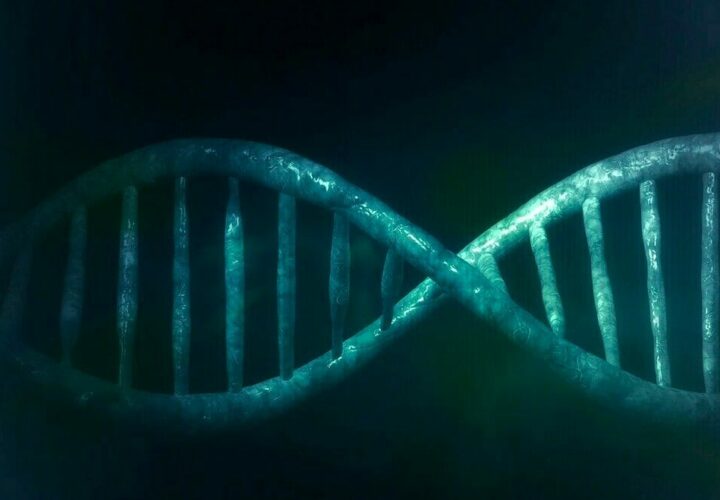For the vast majority of people with the PSEN2 genetic mutation, early-onset Alzheimer’s appears inescapable. One 75-year-old man, however, is beating the odds. What can his brain teach us about the disease?
There’s a hereditary typo in Doug Whitney’s genetic code: a variant that all but guarantees its carriers will contract Alzheimer’s disease within their lifetime. This gene has touched most everyone in his family. His mother — along with 11 of her 13 siblings — all had Alzheimer’s symptoms by the time they were in their 50s. And they all passed away within a decade of onset. But something about Doug Whitney’s brain is different. He’s 75. While he has the beta-amyloid plaques characteristic of Alzheimer’s, there’s no trace of cognitive decline. He appears to be immune to Alzheimer’s disease – perhaps not just a result of his genetics, but also of the choices he’s made.
The majority of Alzheimer’s cases don’t have a clear genetic cause. Genes like ApoE4 might raise the risk, but lifestyle factors play a role too, so it’s seemingly impossible to predict who will develop the disease with absolute certainty. However, a small portion of people carry genetic mutations in genes called PSEN1, PSEN2, and APP. Unlike ApoE4, which is a widely recognized contributor to Alzheimer’s, conventional wisdom holds that these few genes virtually guarantee the development of early-onset Alzheimer’s in a person’s 40s or 50s.
Stories like Doug Whitney’s are calling this conventional knowledge into question: In recent years, researchers profiled Whitney who — against immense odds — never developed the disease, making him the third such documented case. Whitney carries a variant of the PSEN2 gene, and he enrolled in the Dominantly Inherited Alzheimer Network (DIAN) study on Alzheimer’s prevention to help scientists learn more about genetic biomarkers like this one. How is it that, despite carrying PSEN2 and showing the biomarkers in his brain, he never contracted early-onset Alzheimer’s?
In a study published in the journal Nature Medicine, researchers profiled Whitney’s brain and his genome in a bid to learn why he is resistant to Alzheimer’s symptoms, and whether that knowledge could help researchers thwart Alzheimer’s in the future.
“Brain imaging shows that his brain has high levels of beta-amyloid plaques, which would be expected in someone with early-onset Alzheimer’s disease,” said Yakeel T. Quiroz, an associate professor at Harvard Medical School and director of the Multicultural Alzheimer’s Prevention Program at Massachusetts General Hospital, who wasn’t involved in the study.
But unusually, neurotoxic tau tangles — which form after plaques and whose spread through the brain is linked to cognitive decline — were sequestered in one brain region of Whitney’s brain.
“The study reveals a fascinating disconnection between amyloid and tau pathologies,” said Quiroz. “Limiting tau pathology could play a crucial role in reducing neurodegeneration and cognitive impairment.”
The hippocampus, the region of the brain responsible for memory, shrinks in people with the hereditary forms of Alzheimer’s disease. While Whitney’s hippocampus had shrunk with age, it was still larger than expected for people with his genetic mutation.
What protected Whitney’s brain from Alzheimer’s?
Researchers dug into Whitney’s genetics, medications, and lifestyle to search for clues. The obvious place to start was the ApoE gene. Everyone has two copies of this gene, one inherited from each parent. ApoE4, one of four variants of the ApoE gene, is thought to be the strongest risk factor gene for Alzheimer’s. People who carry two copies of it have up to a 60-percent chance of developing the disease in their lifetime.
But the most common allele, APOE3, is believed to have a neutral effect when it comes to Alzheimer’s. There is some evidence to suggest a rare mutation of the APOE3 gene, known as the Christchurch mutation, might provide further protection. Whitney did not carry that particular mutation. But he did carry two others that researchers say might have helped – a version of the CD33 gene that influences the brain’s immune system, and a version of the MAPT gene that affects tau in the brain.
Researchers also looked at Whitney’s medications and lifestyle. He takes the statin drug atorvastatin to control his cholesterol — cholesterol being a known risk factor for Alzheimer’s disease — as well as the over-the-counter, anti-inflammatory drugs aspirin and ibuprofen, daily.
From an environmental perspective, he worked as a diesel engine mechanic on a naval ship, which exposed him to high heat for hours each day. Researchers subsequently found high levels of heat-shock proteins in his cerebrospinal fluid. Heat-shock proteins are produced by the body in response to high temperatures and shield healthy cells and their machinery from the heat. It is unclear if they also shielded the brain from Alzheimer’s. Quiroz said this finding underscores “the potential influence of environmental factors on resilience.”
Taken together, researchers are evaluating whether each of those factors — his genetic make-up, medications, and environmental factors — played roles in blunting the effects of the PSEN2 mutation he inherited.
How to turn resilience into replicable treatment
Figuring out the secret behind Whitney’s resistance to early-onset Alzheimer’s could open the door to new treatments.
Though currently off the market, researchers at Biogen had developed the controversial anti-amyloid drug Aduhelm by mimicking plaque-busting antibodies produced by the immune cells of people with high levels of beta-amyloid whose brains were disease-resistant.
When Quiroz and her colleagues discovered that the Christchurch mutation may have protected a Colombian woman from developing early-onset Alzheimer’s, the Biogen researchers also set out to develop treatments based on the discovery. “Our group has already designed an antibody inspired by our insights from the case,” said Quiroz.
But this case might be more challenging. “There appears to be a protective genetic pathway against Alzheimer’s, distinct from the known disease mechanisms,” Joseph Arboleda-Velasquez, an associate professor at Harvard who wasn’t involved in the study, wrote on Alzforum. “Understanding this pathway could unlock entirely new therapeutic strategies beyond conventional targets.”





I love the information I get from Being Patient. I cared for a mother with AD and know that genetically, I am at high risk. I was very interested in the research in the last edition about light therapy goggles and brain waves. Can you please send that article to my email? I would like to show it to my doctor. Thank you.
Hi Virginia, thank you for being here. Here’s the article about Cognito Therapeutics’ Spectris AD – a high-tech headset that uses flashing lights and sounds, aimed to restore “gamma oscillations” to help combat Alzheimer’s: https://www.beingpatient.com/non-invasive-treatments-alzheimers/?utm_source=organic&utm_medium=social – take care.
Thank you for your interest and help. It is encouraging to know organizations like yours are working to role back mysteries surrounding this difficult disease.
Thank you for your kind words, Robert. We’re glad to have you as part of our community! Take care.